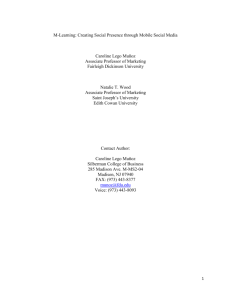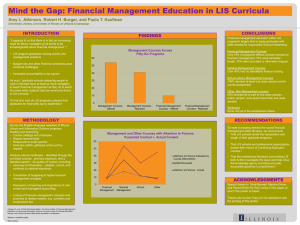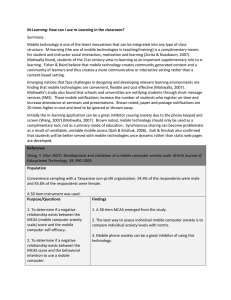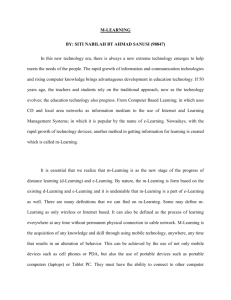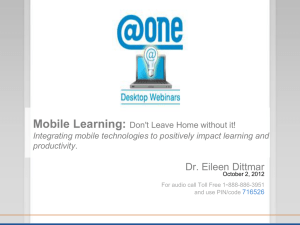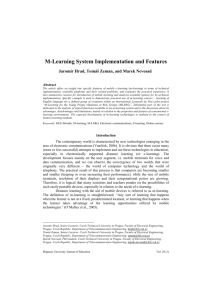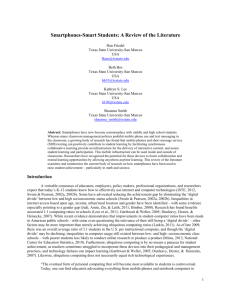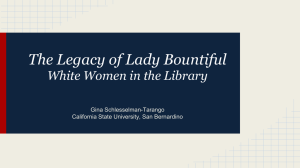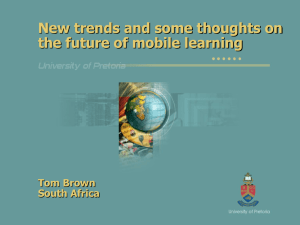Perceptions towards M
advertisement
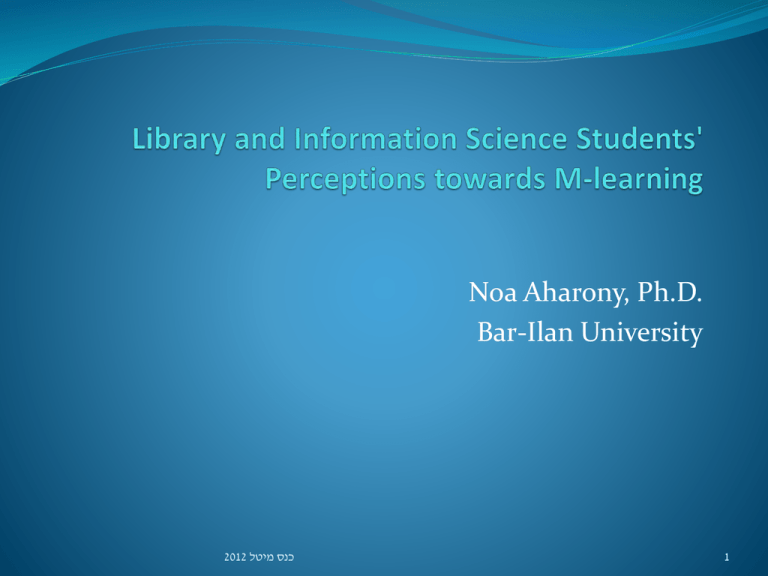
Noa Aharony, Ph.D. Bar-Ilan University 2012 כנס מיטל 1 M-learning Early perspectives focused on technology and suggested that m-learning is the delivery of training by means of mobile device such as mobile phones, and PDAs (McConatha and Praul, 2008). Sharples, Taylor and Vavola (2007) state that m-learning is a conversation across multiple contexts among people and personal interactive technologies. 2012 כנס מיטל 2 Geddes (2004) defines m- learning as the acquisition of knowledge or skills through the use of mobile technology anywhere and anytime. 2012 כנס מיטל 3 M-learning Improve communication and collaborative interaction Provide more learning opportunities for geographically distant people and groups Encourage active learning Enhance learner's feedback, Emphasize time on task Acquire content quickly (Lan & Sie, 2010). 2012 כנס מיטל 4 M-learning Limitations Mobile devices are limited by screen size, battery capacity, and network bandwidth (Chen, Chang, & Wang, 2008). Some researchers postulate that mlearning cannot fully replace traditional learning, but only add value to the current educational setting. 2012 כנס מיטל 5 Research Objectives Whether LIS students' personality and individual characteristics are related to their perceptions about m-learning; Whether differences exist according to level of education, age and gender concerning LIS students' perceptions about m-learning. 2012 כנס מיטל 6 Resistance to change New technologies may cause some form of change within the users. It could be a minor change such as a simple modification of the user interface or a major one when the individual has to change his routine tasks (Nov and Ye, 2008). Thus, different users may react differently to changes; some may accept them while others may resist them. 2012 כנס מיטל 7 Learning Strategies A deep learning strategy A surface learning strategy 2012 כנס מיטל 8 Cost-benefit model The cost-benefit framework suggests that when deciding to adopt new technologies, users would consider both the benefits and costs and tradeoff between them (Shen, Huang, Chu and Hsu, 2010). 2012 כנס מיטל 9 The underlying assumptions of this study are: The less resistant to change LIS students are, the more positive perceptions they have towards m-learning. Deep LIS students will have more positive perceptions towards m-learning than surface LIS students. The higher level of computer mastery, computer academic use, and of media social use, LIS students have, the more positive perceptions they have towards m-learning. Younger LIS students will have more positive perceptions about m-learning than older students. 2012 כנס מיטל 10 Procedures The research was conducted during the first semester of the 2012 academic year. 137 students participated in the research The researchers used six questionnaires: a personal details questionnaire, a perceptions about m-learning questionnaire, computer mastery questionnaire, computer use questionnaire, resistance to change questionnaire, and a learning strategies questionnaire. 2012 כנס מיטל 11 Results H1 was supported. It was found that the more LIS students resist changes; the less willing they are ready to "pay" for the implementation of new and advanced technologies in their learning environments and the more they think that the new technological application use is complicated. 2012 כנס מיטל 12 Results pertaining to H2 demonstrate that this hypothesis was also accepted, indicating that deep LIS learners have more positive perceptions towards mlearning than surface student. 2012 כנס מיטל 13 H3 was also supported. LIS students who have more experience with computer in general, academic computer use in particular, and social media, understand the benefits of technological use, and recognize the advantages of integrating and using m-learning in their curriculum. 2012 כנס מיטל 14 H4 was accepted, revealing that younger LIS students have more positive perceptions about m- learning than do older students. 2012 כנס מיטל 15 Summing up, when considering LIS students perceptions about m-learning, we should take into consideration the importance of individual differences in technology use and acceptance. This characteristic may explain why some students adopt technological innovations in their study environments while others do not. 2012 כנס מיטל 16 Noa.aharony@biu.ac.il 2012 כנס מיטל 17

